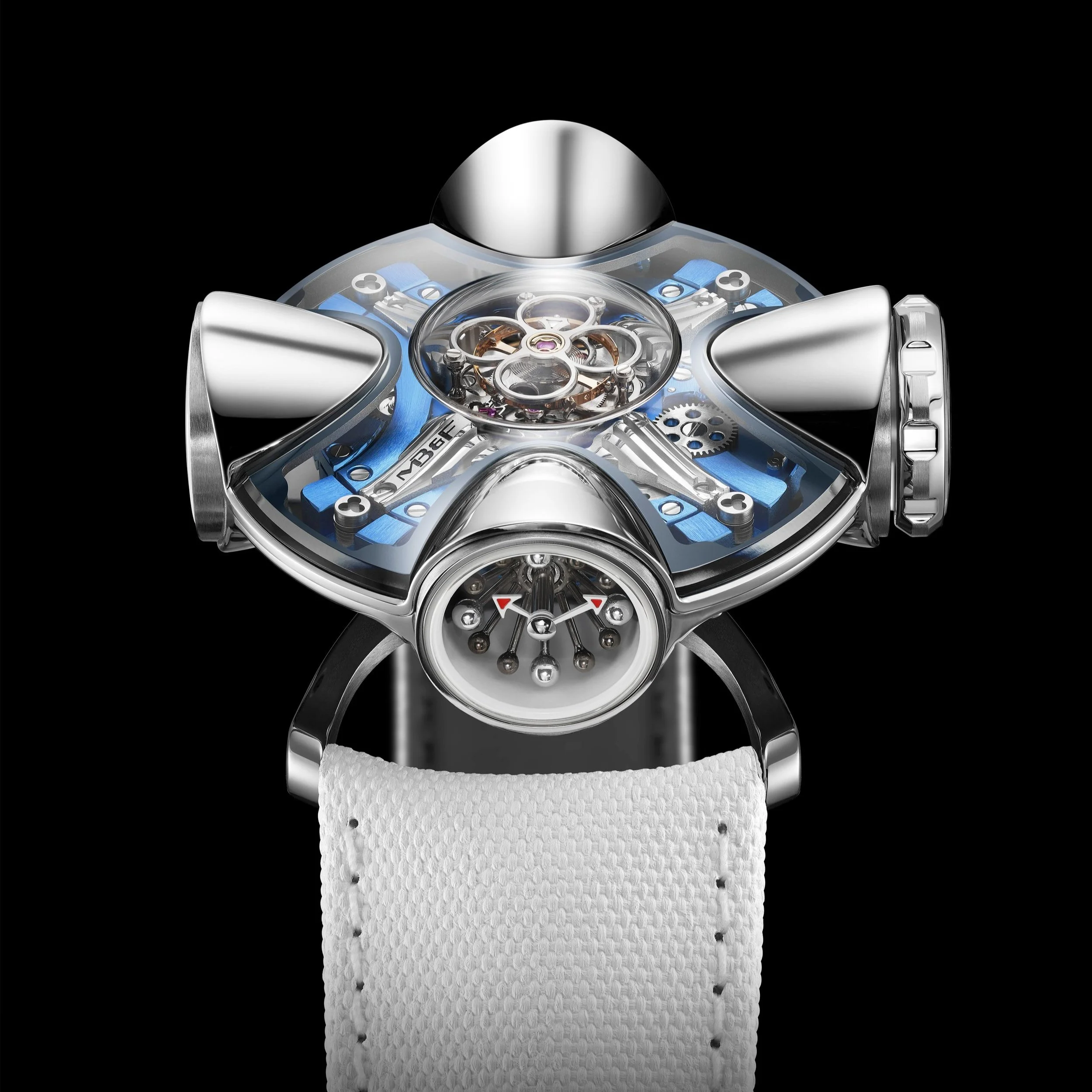Welcoming the arrival of MB&F’s Horological Machine No. 11 Architect
For collectors and enthusiasts of independent watchmaking, the arrival of a new Horological Machine from MB&F is always an event. These timepieces have set the tone for avant-garde watchmaking in the 21st century – madly creative and technically complex. Released to kickoff Dubai Watch Week 2023, this is the brand new Horological Machine No. 11 Architect.
MB&F’s Horological Machine No. 11 Architect
We’ve witnessed Max Büsser find inspiration in historical automotive designs, robotics, the sci-fi of Jules Verne as well as spacecraft. With the HM11 Architect, there’s something new pulled from the realm of experimental, post-war architecture. The house that Max built, the HM11 Architect features a compartmentalized case that situates various aspects of the movement in four “rooms.” While the central flying tourbillon forms the heart of the house, the four rooms and their functions share a similar glossy, white interior with sapphire crystal window pane.
The first, the time room is where you go to retrieve the hours and minutes. Rod-mounted orbs serve as hour markers, using larger and lighter polished aluminum orbs for each quarter and smaller and darker polished titanium orbs for the rest. Red-tipped arrows point to the hours and minutes, providing a rare accent of color to the otherwise Spartan time room.
In the second room, the power reserve display resides inside. Following the design schema established by the time room, rod-mounted orbs are paired with a red-tipped arrow to show how much running autonomy is left in the HM11 barrel. Proceeding clock- wise, the five orbs increase in diameter until the final polished aluminum orb, 2.4mm in diameter, indicat- ing the full 96 hours of power reserve.
In the third room, things take a turn toward the classically architectural – something that evokes strong notions of home. An instrument rarely seen in horological contexts, this room displays a thermometer. HM11 uses a mechanical system of temperature indication with a bimetallic strip, which may seem quaint in this age of instant high-precision electronic thermometers and thermostat-regulated smart homes. This mechanical system functions without any external energy input and is available in Celsius or Fahrenheit display variations.
The fourth and final room is a white void with the only aesthetic feature being a tiny round badge engraved with the MB&F battle-ax motif, set directly into the sapphire-crystal window. But this seemingly empty space functions as the time-setting crown of HM11. Pull on the transparent module, and it opens with a click. It is the front door and key to HM11; you turn it to relocate yourself in time.
Surrounded by polished grade-5 titanium walls, the central atrium is open to the light, covered by a double-arched sapphire crystal roof. Underneath, the in-house HM11 engine hums away, its cadence set by the 2.5Hz (18,000 vph) balance of the flying tourbillon. Plates and bridges are coloured by a PVD process, coming in ozone blue or the warm solar hues of 5N gold.
With every Horological Machine, the design is striking – it’s what draws in and captives the eye. That’s only the surface though. The movement construction and engineering on all Horological Machines always matches the avant-garde nature of MB&F cases, and the HM11 is another testament to that truth. Here, one novelty is the winding of the timepiece. Rather than winding a small crown, the watch itself turns to be wound. It adds greater weight for an unusual tactile experience, and requires fewer overall turns (10 clockwise rotations to be exact) to achieve full charge on the 96-hour power reserve. MB&F has also elevated shock absorption technology in the HM11, creating a full-system dampener of four high-tension springs between the movement and lower-case shell. This protects the flying tourbillon as well as all other components in the movement, comprehensively, rather than the traditional shock absorption approach of having a different system for each specific component.
Lastly, of course, is the mechanical thermometer. The mechanical thermometer of HM11 Architect runs on the same centuries-old principle of exploiting differences in thermal expansion coefficients between materials, but its utilization here constitutes a novel and unusual watchmaking function. A bimetallic strip is formed into a compact spiral and coupled with a rack and lever such that the expansion and con- traction of the spiral changes the rotational angle of the rack, moving the lever which in turn controls the motion of the temperature indication hand. The HM11 mechanical thermometer measures temperatures ranging from -20–60°C (0–140°F), with display variations available in the two most common temperature scales.
Simply another massive creative design and engineering feat for the masterminds at MB&F, the HM11 Architect will be limited to 25 pieces in each colorway.









